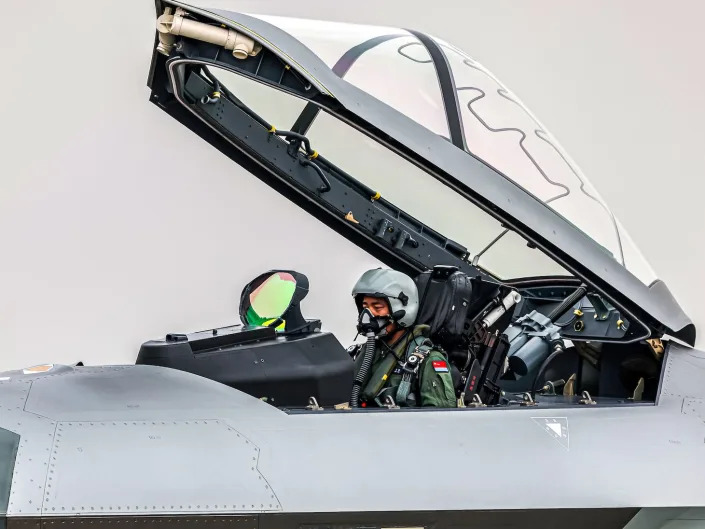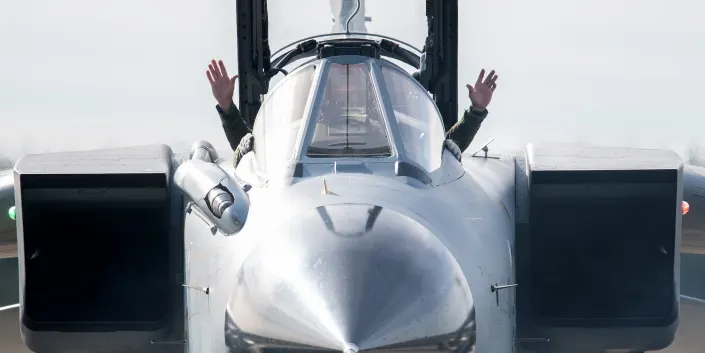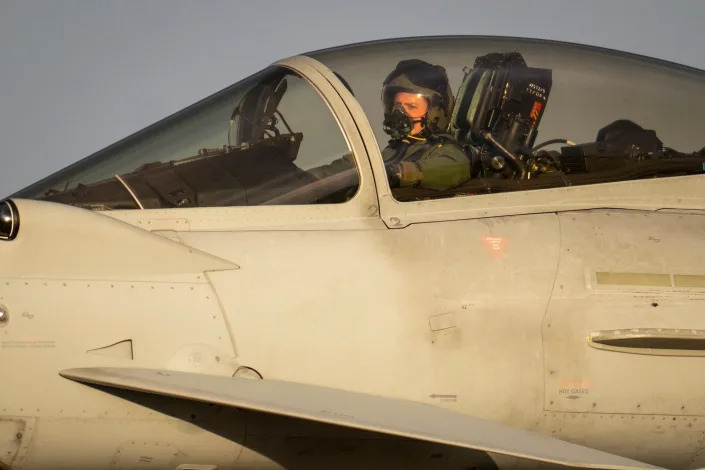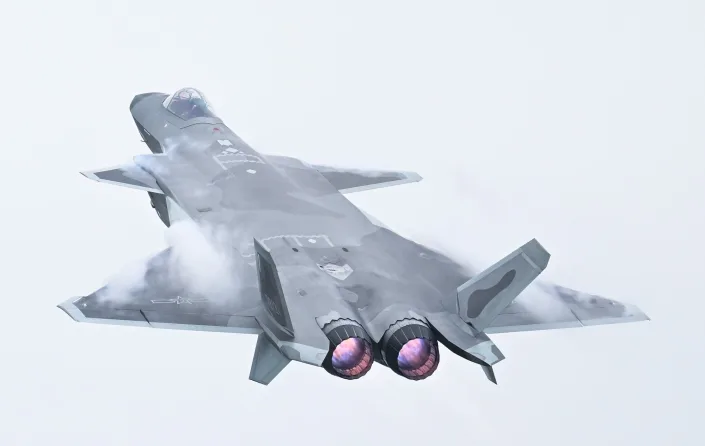
China is looking all over the world for help building and flying its fighter jets

A Tornado fighter jet pilot with his hands in the air after landing at a base in northern Germany in October 2018.Rainer Jensen/picture alliance via Getty Images
China has long had a reputation for copying technology. Now it has gone a step further by copying Western air combat tactics — or rather, paying Westerners to teach them those tactics.
China has recruited former pilots from NATO militaries to train its fliers, allowing the Chinese air force not only to take advantage of Western experience and replace rigid Soviet-style doctrine with more flexible Western methods but also giving it insight into how potential enemies would fight.
In February, German newspaper Der Spiegel reported that former German fighter pilots had gone to China, where they appeared to have worked as trainers in exchange for salaries “that would normally be reserved for professional athletes or top executives.”
“German security officials believe it is very possible that the pilots have passed on military expertise and confidential operational tactics, and even practiced attack scenarios, such as an offensive against Taiwan,” according to Der Spiegel.

A British Royal Air Force Eurofighter Typhoon fighter jet at RAF Coningsby in May.Christopher Furlong/Getty Images
The German report came just a few months after reports that as many as 30 former British military pilots had been hired to go to China and were paid as much as $270,000.
Even US pilots appear to have been targeted by Chinese headhunters. Daniel Duggan, a former US Marine Corps pilot, has been accused of violating the Arms Export Control Act by training Chinese military pilots. Duggan, now an Australian citizen, has claimed he was training civilian pilots and is in an Australian jail facing extradition to the US.
At the same time, China is aggressively seeking Western aviation technology, especially for jet engines. China’s aviation industry has made impressive strides since the days when it merely copied Soviet models, to the point where it has developed its stealth fighter, the J-20 (which does appear to have borrowed some aspects of US designs).
But the Achilles heel of Chinese aviation remains propulsion: In the past, China imported or copied Russian engines that were decades behind their Western counterparts in reliability and lifespan. China now uses the indigenously developed WS-10, which initially had a poor reputation for reliability.
Efforts to develop the more advanced WS-15 engine date back to the 1990s, but the engine may only just be emerging from the development stage. (The WS-15 is said to be designed specifically for the J-20.)

A WS-10 engine at Airshow China 2021 in Zhuhai in September 2021.Chen Jimin/China News Service via Getty Images
“In addition to trying to develop an engine that meets the thrust-to-weight requirements of fifth-generation aircraft, Chinese aerospace engineers are struggling to achieve meaningful reliability,” according to a report published by the Center for Strategic and International Studies, a US think tank, in March.
“Currently, Chinese jet engines can at best achieve one-fourth the life span of Western engines,” the report says.
Ironically, Western countries were once happy to sell aviation technology to China. When relations thawed in the 1970s, China was able to import hardware, such as British-made jet engines, but the Tiananmen Square massacre in 1989 prompted Western sanctions that halted much of that trade.
To manufacture engines, China still needs to import complex machine tools, including equipment made in Germany, Japan, Italy, and South Korea.
In addition, China also seeking to exploit Western know-how while its own scientists and engineers gain experience. This includes teaming up with foreign universities to access technical knowledge.

A J-20 stealth fighter jet at Airshow China 2022 in Zhuhai in November.Deng Hua/Xinhua via Getty Images
“China has actively pursued opportunities to gain this knowledge by copying the innovations of other firms, engaging in partnerships that involve technology transfer, and working with universities around the world to gain new insights,” the CSIS report said.
China is hardly unique in this practice. Nations have always borrowed military expertise and technology from their friends and enemies.
The Ottomans blew down the high walls of Constantinople and destroyed the Byzantine Empire in 1453 using newfangled cannons developed by a Hungarian gunmaker. Tsarist Russia imported foreign commanders, including the American naval hero John Paul Jones, who became a Russian admiral. After World War II, the US and the Soviets put former Nazi scientists to work on their ballistic-missile and space-exploration programs.
In the end, Western countries are going to have make a choice: Blocking Chinese experts and firms from their hardware and know-how may mean walling themselves off from an immense Chinese market that has fueled decades of economic growth.
Correction: June 26, 2023 — This story has been updated to note that China has adopted the indigenously developed WS-10 engine for use on its fighter jets.
Soucre: news.yahoo.com





